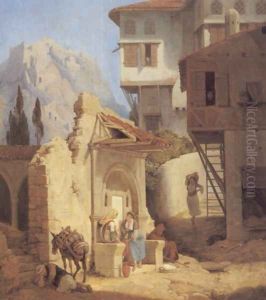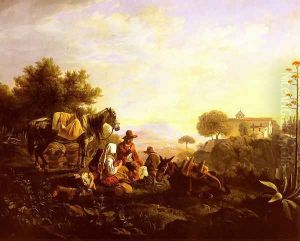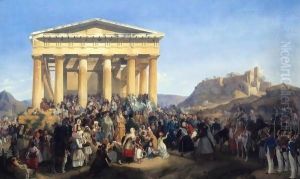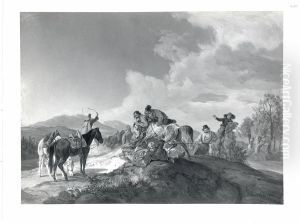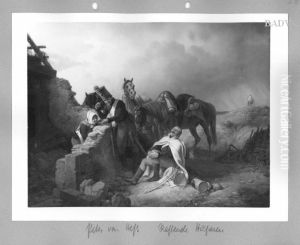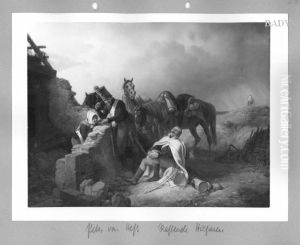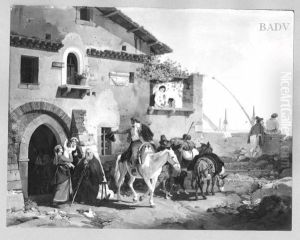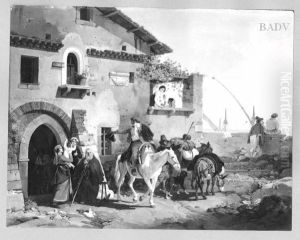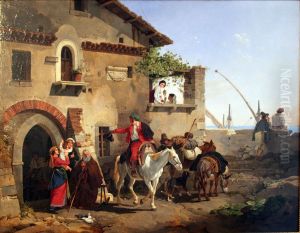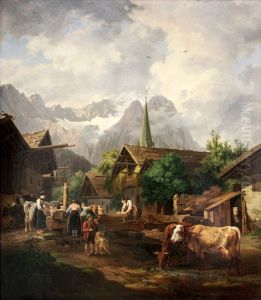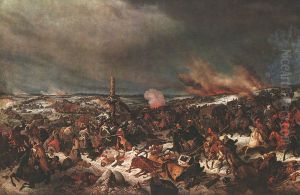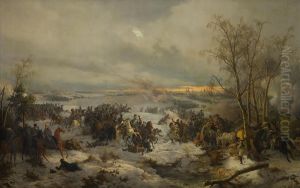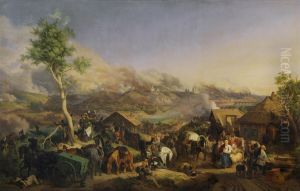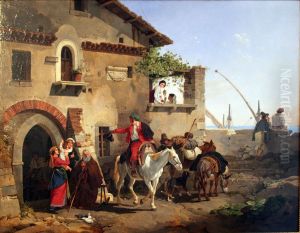Peter von Hess Paintings
Peter von Hess was a German painter, known for his historical scenes and paintings, particularly those depicting battles and military subjects. He was born on July 8, 1792, in Düsseldorf, Germany, into an artistic family. His father, Carl Ernst Christoph Hess, was a painter and engraver who had a significant influence on his early training. Peter von Hess initially studied under his father before enrolling in the Academy of Fine Arts Munich, where he further honed his artistic skills.
Von Hess's artistic career was deeply intertwined with the political and military events of his time. He gained prominence as a court painter under King Ludwig I of Bavaria. One of his early and most significant commissions was a series of large-scale paintings illustrating the Greek War of Independence, which he was able to depict with great detail and accuracy, partly because he accompanied King Otto of Greece to the newly liberated country in 1833.
Throughout his career, Peter von Hess focused on large, dynamic compositions that glorified military victories and national pride. His work was part of the Romantic movement, which emphasized emotion and individualism, as well as glorification of the past and nature. He was particularly adept at capturing the grandeur and drama of battle scenes, which brought him considerable fame during his lifetime.
Von Hess's contributions to Bavarian and Greek history through his art were well recognized, and he played a key role in the development of history painting in 19th century Germany. His paintings often contained a high level of detail and were characterized by their vividness and vibrant color palette. In addition to his historical and battle scenes, von Hess also painted religious subjects and portraits.
Peter von Hess continued to paint until his later years, leaving behind a legacy as one of the prominent history painters of his era in Germany. He passed away on April 4, 1871, in Munich. His works remain on display in various museums and collections, serving as historical documents as well as artistic achievements of the Romantic period.
